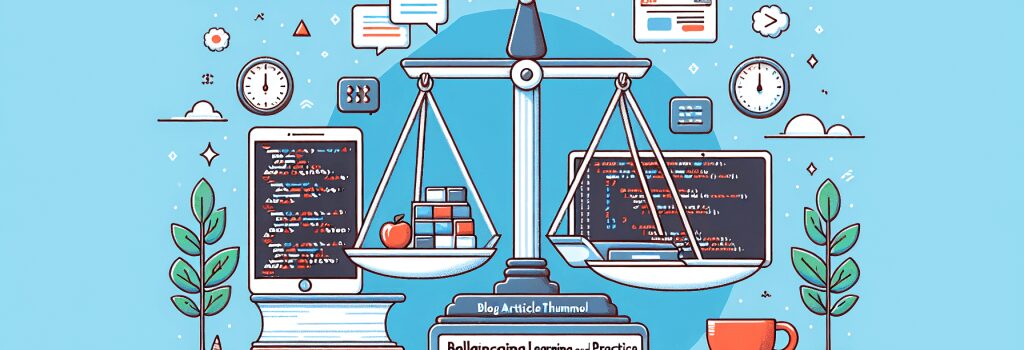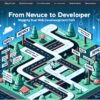Balancing Learning and Practice: A Guide for Aspiring Web Developers

Aspiring to become a web developer is an exciting journey, filled with learning, creativity, and endless opportunities. One of the key challenges that many beginners face, however, is finding the right balance between learning new concepts and practicing them. This guide aims to provide practical advice on how to balance learning and practice effectively, helping you to advance your skills in web development using technologies like HTML, PHP, CSS, JavaScript, and WordPress.
Setting Realistic Goals
The first step to balancing learning and practice is setting realistic and achievable goals. Understanding what you aim to accomplish within specific time frames helps in organizing your study and practice sessions more effectively.
Short-term Goals
Set weekly or monthly objectives, such as learning the basics of HTML and CSS or building a simple website. These smaller milestones will keep you motivated and provide a sense of achievement as you progress.
Long-term Goals
Define where you want to be in a year or two, such as becoming proficient in PHP and WordPress development or landing your first job as a web developer. Long-term goals will guide your learning path and help you remain focused on the bigger picture.
Mastering the Basics
The foundation of web development lies in understanding the basics. Before diving deep into complex topics, ensure that you have a solid grasp of HTML, CSS, and JavaScript. Use structured tutorials and interactive platforms to learn these core technologies.
Practice by Building
Apply what you learn by creating simple web pages and incrementally incorporating more complex elements like forms, responsive layouts, and basic animations. This hands-on approach solidifies your knowledge and enhances your problem-solving skills.
Integrating Advanced Skills
As you become comfortable with the basics, gradually introduce PHP and WordPress into your learning routine. Start with PHP fundamentals, exploring how it integrates with HTML and databases to create dynamic websites. Then, move on to WordPress, focusing on themes and plugin development to leverage its extensive functionality.
Real-world Projects
Working on real projects, such as a personal blog or a small business website, can be incredibly rewarding. These projects allow you to apply both your front-end and back-end development skills, offering a comprehensive practice experience.
Utilizing Online Resources and Communities
The internet is teeming with resources and communities dedicated to web development. Engage in forums, attend webinars, and participate in coding challenges to expose yourself to different approaches and solutions. Learning from others is invaluable and can significantly accelerate your growth.
Balancing Act
While it’s important to allocate time for both learning and practicing, flexibility is key. Don’t hesitate to adjust your schedule based on your learning pace and personal obligations. Some concepts might require more time to understand, and that’s perfectly normal.
Scheduled Practice
Dedicate specific blocks of time for coding practice. This could be implementing a new feature for a project or experimenting with code snippets to understand their functionality. Hands-on practice is crucial for reinforcing your learning.
Reflect and Adjust
Regularly review your progress and the effectiveness of your study methods. If certain areas are not improving as expected, consider seeking additional resources or adjusting your practice strategies.
Conclusion
Balancing learning and practice in web development is a dynamic process that requires patience, persistence, and adaptability. By setting clear goals, mastering the fundamentals, progressively tackling more complex topics, and engaging with the web development community, you can cultivate a well-rounded skill set. Remember, the journey of becoming a web developer is as rewarding as the destination, with each step offering new challenges and opportunities for growth. Keep pushing forward, stay curious, and enjoy the process of creating and problem-solving in the digital world.


